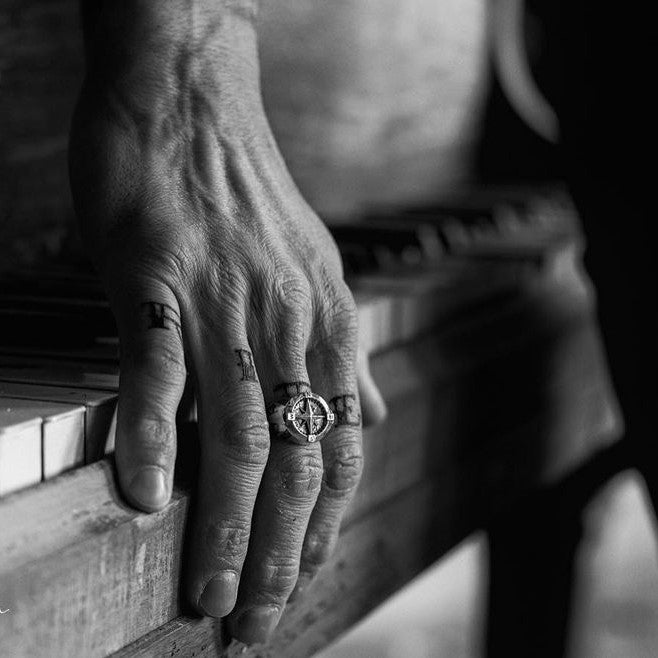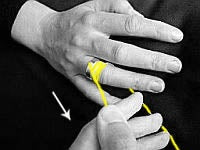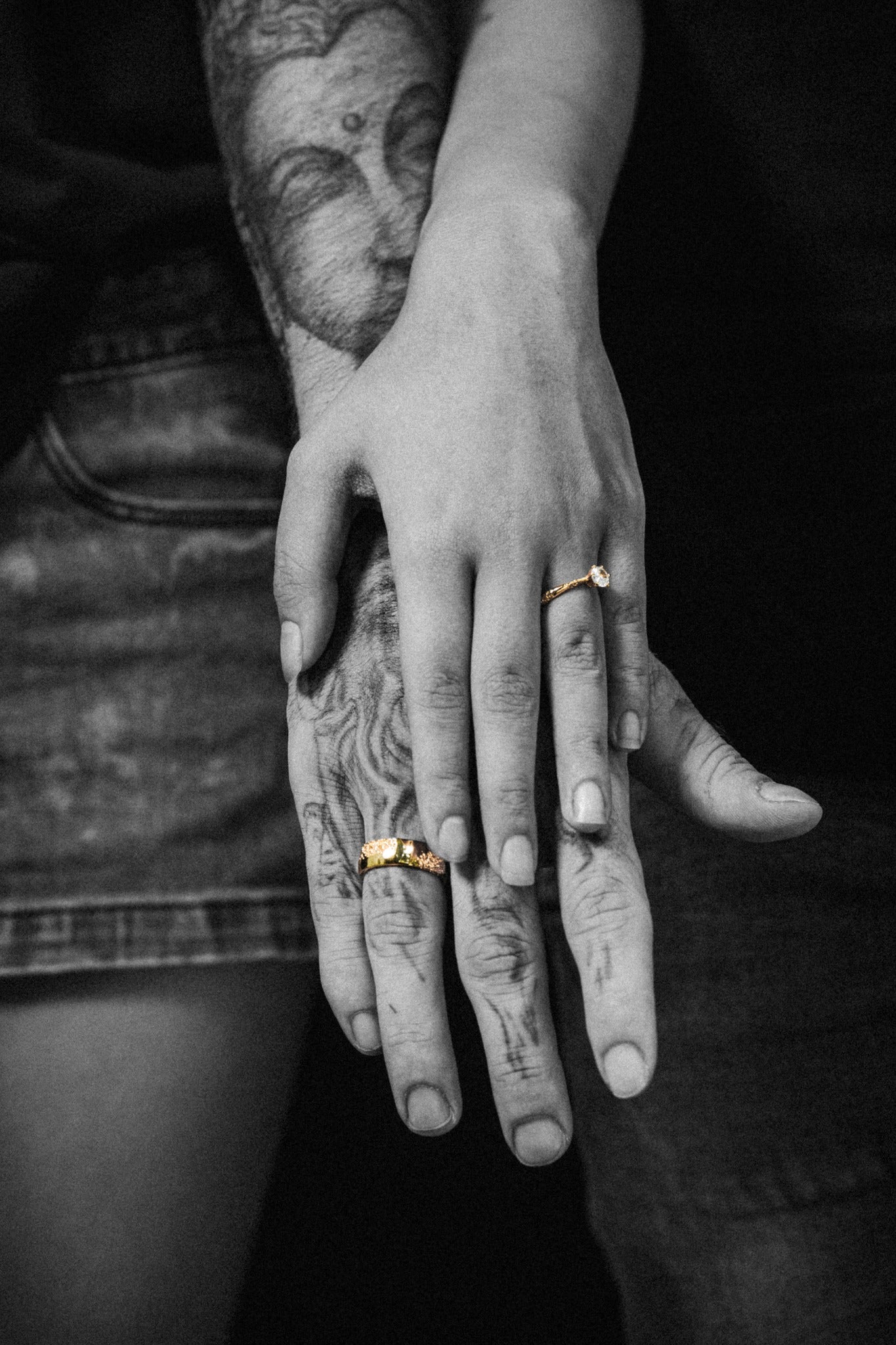Jewelry has captivated humans for millennia. Whether as adornment, symbols of status, talismans, or expressions of personal identity, jewelry has evolved alongside human civilization. This 5,000-year-old tradition spans continents and cultures, and its significance has evolved as societies have advanced.
From the humble beginnings of organic materials used in ancient times to the intricate designs of today, jewelry tells the story of humanity itself - its triumphs, traditions, and creativity.
In this comprehensive guide, we will embark on a journey through the history of jewelry, uncovering its evolution from the ancient world to contemporary times.
1. The Origins of Jewelry
Jewelry has been part of human history for over 100,000 years. The earliest pieces were simple and made from organic materials such as bones, stones, and shells, serving spiritual or practical purposes. Over time, as humans developed the ability to manipulate metals and gemstones, jewelry became more intricate and began to serve as a symbol of status, wealth, and power.
Jewelry has been found in archeological sites from the Mediterranean to Mesopotamia, often buried with the deceased, indicating its importance in both life and death. From simple amulets designed to ward off evil spirits to elaborate adornments that conveyed social rank, jewelry has always carried deep meaning.
2. Jewelry in Ancient Civilizations
The Mediterranean and Mesopotamian Civilizations
Around 3,000 BCE, the Mesopotamian civilizations began creating jewelry from precious metals like gold and silver. These pieces often took the form of necklaces, bracelets, and headdresses, and were adorned with intricate designs and gemstones such as lapis lazuli, carnelian, and turquoise.
In the Mediterranean, the Minoan and Mycenaean cultures were among the first to create advanced metalwork, fashioning jewelry that was heavily inspired by natural elements like flowers and animals.
Ancient Egypt: The Land of Gold
Perhaps no ancient civilization is more synonymous with jewelry than Ancient Egypt. Egyptians considered jewelry not only as an indicator of status but also as a tool for spiritual protection. Gold was abundant in Egypt and was considered the flesh of the gods, making it a symbol of eternity. Pharaohs and queens were buried with elaborate treasures, including necklaces, bracelets, and rings inlaid with gemstones like turquoise, lapis lazuli, and garnet.
Jewelry held deep spiritual significance, often depicting gods, sacred animals, and religious symbols. The ankh, scarab, and Eye of Horus were common motifs that symbolized life, protection, and rebirth.
Jewelry in Ancient Greece and Rome
The Greeks and Romans created jewelry that combined both beauty and practicality. In Greece, jewelry was often used to honor the gods and was worn during ceremonies. Greeks preferred gold and silver with delicate designs, including laurel wreaths, earrings, and bracelets. Roman jewelry, however, was much more ornate and made from a wider variety of materials, including pearls, emeralds, and garnets. Roman soldiers even wore rings that symbolized rank and loyalty to their emperor.
3. Jewelry in the Middle Ages
The Rise of European Jewelry
The fall of the Roman Empire led to a decline in luxury arts across Europe. However, by the 5th century, medieval Europe saw a resurgence of craftsmanship in jewelry, with influences from the Christian Church and the Byzantine Empire. Jewelry during the Middle Ages was often used as a display of power and wealth, particularly among the clergy and nobility.
Jewelry in the Byzantine Empire
The Byzantine Empire (330–1453 CE) was a center of jewelry making, known for its use of gold and religious imagery. Byzantine jewelry often featured Christian symbols like the cross, as well as intricate enameling and gemstone work.
Viking and Anglo-Saxon Jewelry
In Northern Europe, Viking and Anglo-Saxon cultures were known for their bold and practical jewelry. Made from bronze, silver, and gold, Viking jewelry was often engraved with runes and featured designs of animals, knotwork, and mythical figures. Brooches, arm rings, and pendants were common among both men and women.
4. Jewelry in the Renaissance and Baroque Periods
The Artistic Flourishing of Renaissance Jewelry
The Renaissance (14th-17th centuries) was a period of rebirth for the arts, and jewelry was no exception. Renaissance jewelry was heavily influenced by classical themes, with a renewed interest in nature, mythology, and allegory. Goldsmiths during this period refined their techniques, producing pieces that incorporated enamel, pearls, diamonds, and other precious stones.
Baroque Extravagance: 17th-Century Opulence
In contrast to the symmetry and balance of Renaissance jewelry, Baroque jewelry (17th century) embraced bold, extravagant designs. Elaborate necklaces, chandelier earrings, and bejeweled hairpieces were popular among the European aristocracy. This period also saw the rise of imitation jewelry, as demand grew among the working classes.
5. Georgian and Victorian Jewelry
The Georgian Era: Craftsmanship and Innovation
The Georgian period (1714-1837) was a time of intense creativity in jewelry-making, marked by innovations in metalworking and gemstone cutting. Repoussé (a technique of hammering metal into relief) and cannetille (delicate wirework) were popular during this period. Jewelry was mostly handcrafted, and pieces often featured motifs inspired by nature, including flowers, leaves, and birds.
The Romantic and Mourning Jewelry of the Victorian Period
The Victorian era (1837-1901) was deeply influenced by the personal life of Queen Victoria. The early Romantic period saw jewelry designs that were light and optimistic, often featuring flowers, hearts, and serpents (a symbol of eternal love). However, after Prince Albert's death in 1861, Queen Victoria entered a period of mourning, which significantly influenced jewelry trends. Dark, somber materials like jet, onyx, and black glass became popular, along with lockets and cameos as sentimental mementos of loved ones.
6. Jewelry in the 20th Century
The Art Nouveau Movement
At the turn of the 20th century, the Art Nouveau movement brought a fluid, organic aesthetic to jewelry. Inspired by nature, Art Nouveau jewelry often featured flowing lines, enamel work, and motifs of insects and flowers. Jewelers like René Lalique pioneered this style, emphasizing craftsmanship and the artistic use of materials.
The Geometry of Art Deco
In the 1920s and 1930s, the Art Deco movement introduced bold, geometric designs that were a sharp contrast to the flowing forms of Art Nouveau. Jewelry from this era featured clean lines, symmetry, and a preference for precious metals like platinum. Gemstones like diamonds, rubies, and emeralds were often set in bold, angular patterns.
7. Contemporary Jewelry and Modern Trends
The 1960s and the Rise of Personal Expression
The 1960s marked a turning point in jewelry design, with a focus on self-expression and individuality. Jewelry became less about status and more about personal style, leading to a wide range of designs that incorporated new materials like plastic and acrylic alongside traditional metals and stones.
Ethical and Sustainable Jewelry in the 21st Century
Today, the jewelry industry faces new challenges, with increasing attention on ethical sourcing and sustainability. Many designers are turning to recycled metals, fair-trade gemstones, and lab-grown diamonds to meet the growing demand for eco-friendly jewelry.
At Helios Global, we take pride in embracing this rich heritage, crafting pieces that are not only beautiful but also deeply meaningful. We hope you enjoyed this brief journey through jewelry history. If you’d like to explore more of our collection, inspired by historical eras and cultural motifs, feel free to visit our website or contact us directly.






